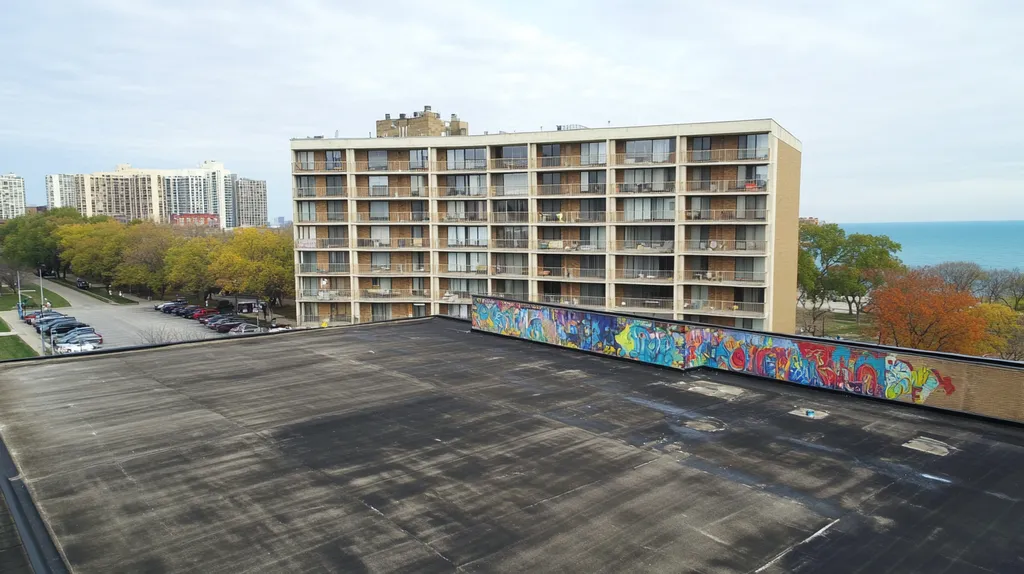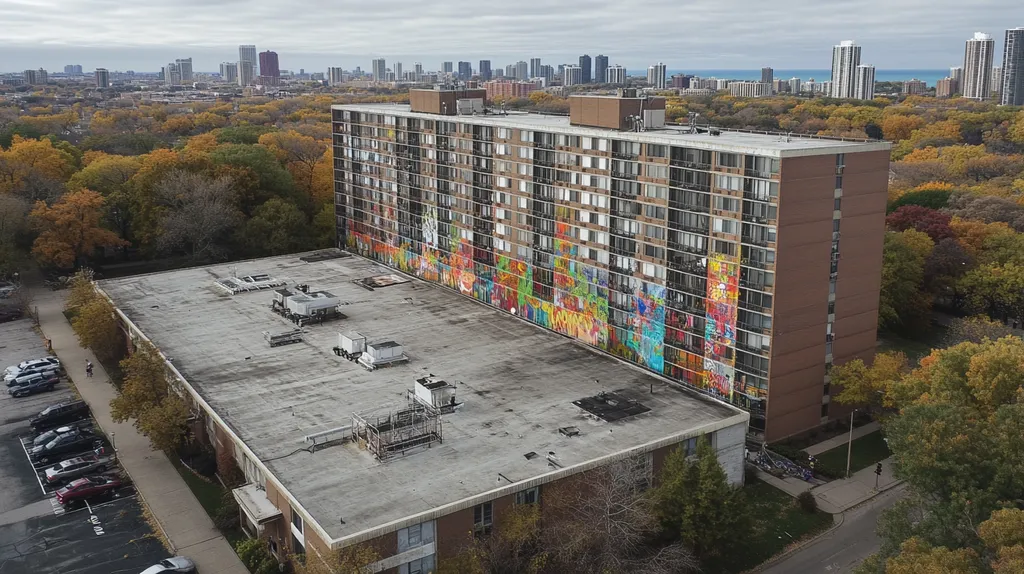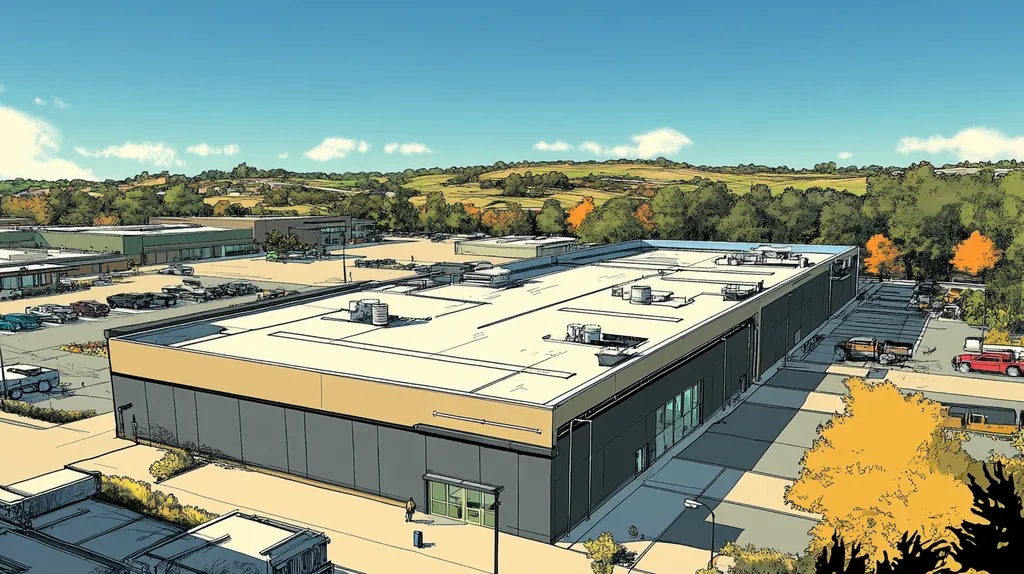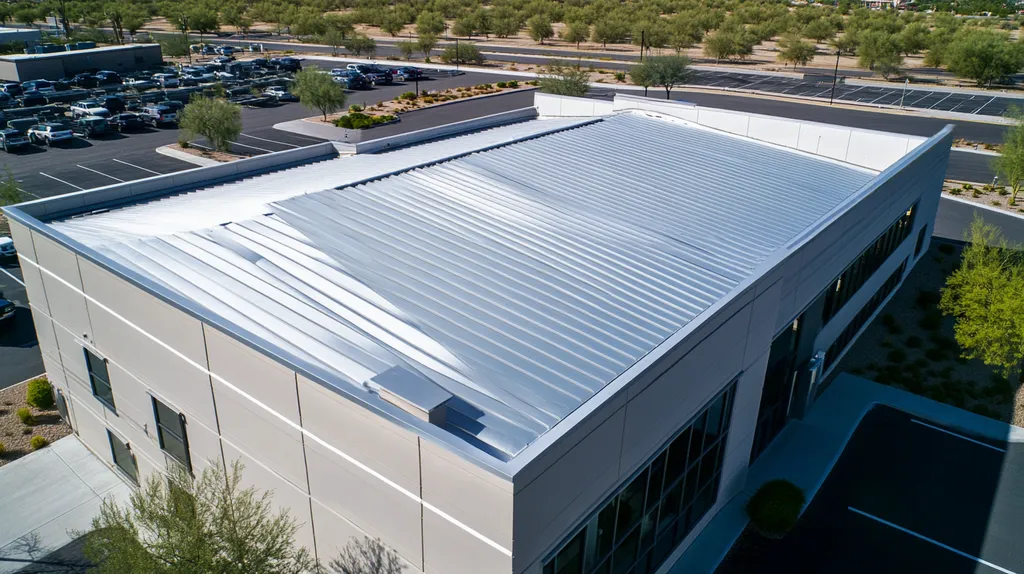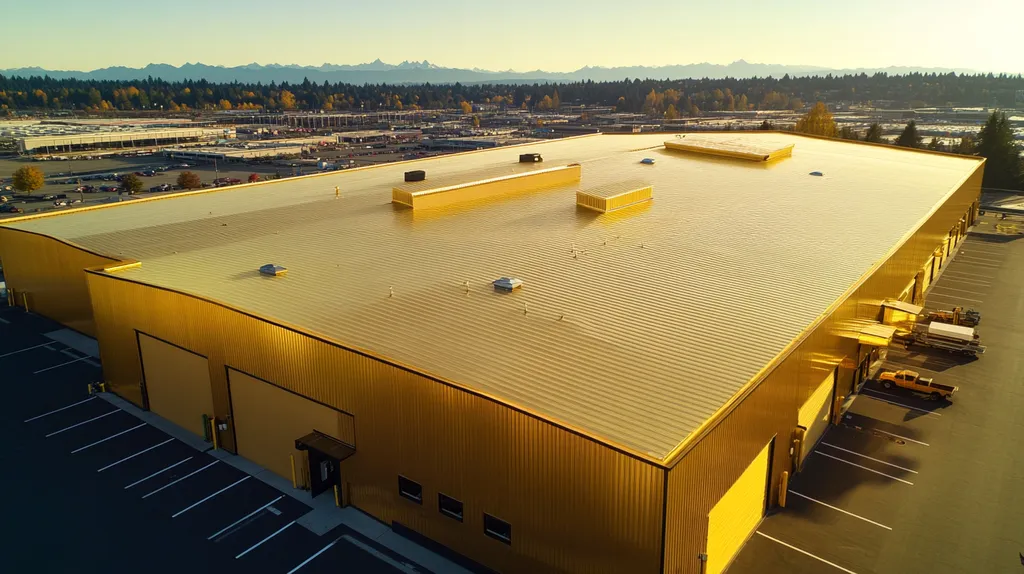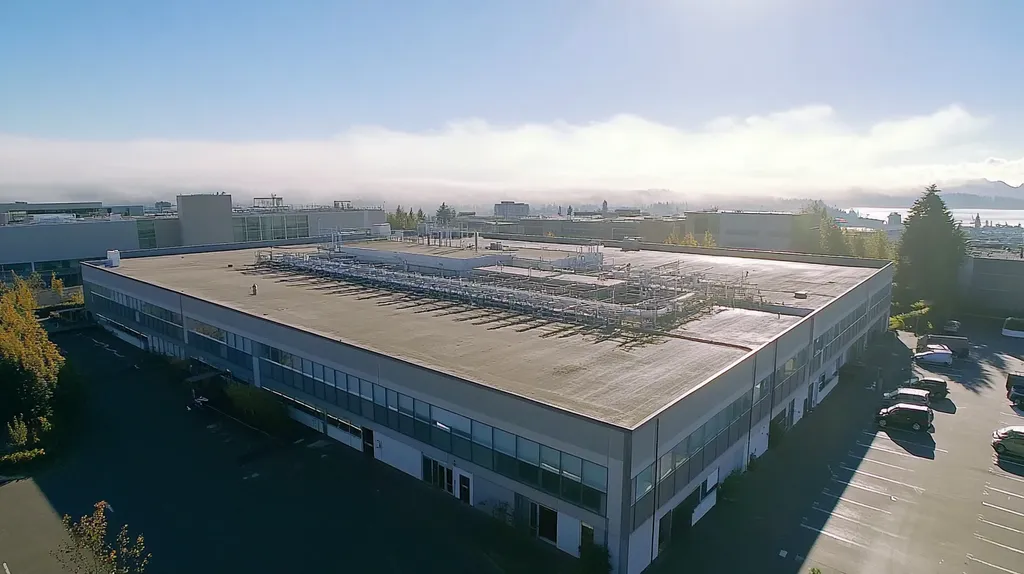Commercial roof warranties represent a $12 billion annual investment protection market, yet industry data shows that 65% of warranty claims are denied due to preventable documentation and compliance issues.
For facility managers overseeing properties valued at millions of dollars, understanding warranty coverage becomes a critical financial imperative. The average unplanned roof replacement costs $750,000 for a typical 100,000-square-foot facility.
This comprehensive guide examines the fundamental concepts, system components, implementation methods, maintenance requirements, performance metrics, and optimization strategies essential for maximizing commercial roof warranty protection.
SECTION 1: FUNDAMENTAL CONCEPTS
Commercial roof warranties represent a critical investment protection mechanism that many facility managers misunderstand or undervalue. Industry data shows that over 40% of premature roof failures stem from warranty-related oversights. Understanding warranty fundamentals becomes especially crucial when considering that a typical commercial roof represents 5-10% of a building’s total value.
Types of Commercial Roof Warranties Explained
CertainTeed and other major manufacturers offer three primary warranty categories: material-only warranties, system limited warranties, and No Dollar Limit (NDL) system warranties. These options typically range from 10 to 25 years for asphaltic membrane systems, with possible coverage extensions through maintenance agreements. (source: CertainTeed)
Material-only warranties provide the most basic coverage, protecting solely against manufacturing defects in the roofing materials. These warranties typically exclude labor costs and often carry significant prorating after the first few years.
System limited warranties expand coverage to include both materials and authorized installation methods. These warranties require installation by certified contractors and adherence to manufacturer specifications.
NDL warranties offer the most comprehensive protection, covering both materials and labor without monetary limits. However, they demand strict adherence to installation guidelines and regular maintenance protocols.
Key Warranty Terms and Coverage Limits
Coverage limits define the maximum dollar amount a warranty will pay for repairs or replacement. Standard material warranties typically prorate coverage based on the roof’s age, while NDL warranties maintain full coverage throughout the warranty period.
Wind coverage represents a critical warranty component, with standard coverage typically ranging from 55 to 120 mph. Higher wind speed coverage often requires enhanced installation methods and additional fastening requirements.
Leak coverage terms specify response times and repair obligations. Most warranties require property owners to report leaks within 30 days of discovery to maintain coverage validity.
Maintenance requirements outline specific inspection schedules and documentation needs. Failing to maintain these records can invalidate warranty coverage, even for otherwise covered issues.
Common Exclusions and Void Conditions
Natural disasters beyond specified wind speeds and hail sizes typically fall outside warranty coverage. Most warranties exclude damage from earthquakes, floods, and hurricanes unless specifically endorsed.
Unauthorized roof modifications void warranty coverage immediately. This includes installing new equipment, creating penetrations, or adding structures without manufacturer approval.
Poor maintenance practices lead to warranty invalidation. Neglecting debris removal, allowing ponding water, or failing to maintain drainage systems typically void coverage.
Chemical exposure from equipment leaks or environmental contamination usually falls outside warranty protection. This includes damage from grease, oil, and industrial emissions unless specifically covered by endorsement.
SECTION 2: SYSTEM COMPONENTS
Commercial roofing systems represent complex assemblies where component quality and installation precision directly impact long-term performance. Industry data reveals that 85% of premature roof failures stem from improper component selection or installation defects. Understanding how these elements interact and their warranty implications helps facility managers protect their investments and avoid costly system failures.
Roofing Materials and Manufacturer Warranty Roles
Primary roofing materials include membranes, insulation, coverboards, and adhesives. Each component must meet specific performance standards to qualify for warranty coverage.
CertainTeed and other major manufacturers offer tiered warranty options ranging from basic material coverage to comprehensive system protection. These warranties span 10 to 25 years for asphaltic membrane systems, with possible extensions through maintenance compliance. (source: CertainTeed)
Material compatibility requirements demand strict adherence to manufacturer specifications. Using unauthorized components or mixing systems from different manufacturers typically voids warranty protection.
Chemical resistance ratings and environmental exposure limits define acceptable use conditions. Exceeding these parameters compromises both performance and warranty validity.
Workmanship Coverage and Installation Standards
Installation quality directly impacts system performance and warranty validity. Proper membrane attachment, seam welding, and flashing installation require precise execution to maintain coverage.
Certified contractor programs establish minimum competency requirements. These programs ensure installers understand current installation methods and warranty compliance standards.
Quality control documentation must validate proper installation procedures. This includes photographic evidence, material tracking, and testing results throughout the installation process.
Regular inspection protocols verify ongoing compliance with installation standards. Documented inspections become crucial evidence when addressing potential warranty claims.
Components Covered Under System-Wide Warranties
System warranties typically include membrane materials, insulation assemblies, and attachment components. Coverage scope varies based on warranty tier and system complexity.
Edge metal systems, flashings, and penetration details require specific attention. These critical transition points often determine overall system performance and warranty validity.
Drainage components and mechanical attachments must meet engineering requirements. Proper sizing and installation of these elements prevents premature system failure.
Auxiliary components like walkway pads and lightning protection require separate consideration. These additions need explicit approval to maintain system warranty coverage.
SECTION 3: IMPLEMENTATION METHODS
Implementing proper warranty protocols represents a critical yet often mismanaged aspect of commercial roofing. Industry data shows that over 60% of denied warranty claims stem from improper implementation rather than actual product failures. Understanding and following correct implementation methods becomes essential when protecting a commercial roof investment that can exceed $500,000 for a typical 50,000-square-foot facility.
Authorized Contractor Requirements for Warranty Validity
Roof system warranties require installation by manufacturer-authorized contractors who maintain specific certifications and insurance coverage. These contractors undergo regular training and assessment to maintain their authorized status.
To secure a contractor warranty, roofing companies must guarantee their workmanship for 1-5 years and carry appropriate insurance coverage. Material and labor warranties specifically mandate installation by authorized contractors with verification through manufacturer inspections. (source: IBS Roofing)
Authorized contractors must demonstrate proficiency in current installation techniques and maintain updated certifications. This includes mastery of system-specific details and emerging installation technologies.
Regular performance evaluations ensure contractors maintain high-quality standards. Manufacturers track installation quality metrics and warranty claim rates to maintain contractor authorization status.
Steps to Secure Material and Labor Warranties
The warranty procurement process begins during project planning with proper system selection. Each component must meet building code requirements and environmental conditions specific to the facility location.
Pre-installation conferences establish proper procedures and documentation requirements. These meetings ensure all parties understand their roles in maintaining warranty validity.
Installation monitoring requires systematic quality control checks at critical phases. This includes membrane attachment verification, seam testing, and flashing inspections.
Final warranty issuance depends on completing all required documentation and passing manufacturer inspections. This includes photographic evidence of proper installation methods and material usage records.
Documentation and Inspection Protocols
Warranty compliance requires maintaining detailed installation and maintenance records. This documentation includes material delivery receipts, daily installation logs, and quality control test results.
Regular roof inspections must follow manufacturer-specified schedules and procedures. These typically occur bi-annually and after severe weather events to identify potential issues early.
Inspection reports require specific formatting and content to support warranty claims. This includes detailed photographs, measurements, and condition assessments of all roof components.
Documentation storage systems must maintain records throughout the warranty period. Digital platforms often provide the most reliable method for organizing and accessing warranty-related documentation.
SECTION 4: MAINTENANCE REQUIREMENTS
Maintenance requirements represent the most frequently overlooked aspect of commercial roof warranty compliance. Industry data shows that 85% of warranty claims are denied due to inadequate maintenance documentation or non-compliance with specified protocols. With commercial roof replacements averaging $750,000 for a typical 100,000-square-foot facility, maintaining warranty validity through proper maintenance becomes a critical financial consideration.
Routine Maintenance Obligations for Warranty Compliance
Warranty compliance requires systematic maintenance protocols that address both preventive care and immediate repair needs. These protocols must align with manufacturer specifications for frequency, scope, and documentation requirements.
CertainTeed’s Integrity Roof System Limited Warranties maintain coverage only when building owners follow specific maintenance requirements, with Gold Star Contractors able to extend warranty duration by 25% through maintenance agreements. (source: CertainTeed)
Regular debris removal and drainage system cleaning represent fundamental maintenance tasks. These activities prevent water accumulation and reduce stress on roofing components.
Maintenance records must document all activities, including routine cleanings, repairs, and modifications. These records become crucial evidence when warranty claims arise.
Impact of Neglect and Unauthorized Repairs
Neglecting maintenance requirements leads to accelerated system deterioration and warranty invalidation. Common oversights include delayed repairs, improper cleaning methods, and unauthorized modifications.
Unauthorized repairs by non-certified contractors void warranty coverage immediately. This includes emergency repairs and temporary fixes that fail to meet manufacturer specifications.
Chemical exposure from equipment maintenance or cleaning activities can compromise system integrity. Proper protection measures must prevent contact between harsh chemicals and roofing materials.
Structural modifications without manufacturer approval invalidate warranties instantly. This includes installing new equipment, creating penetrations, or adding architectural elements.
Scheduled Roof Inspections and Reporting
Professional inspections must occur bi-annually and after severe weather events. These inspections identify potential issues before they escalate into major problems.
Inspection reports require specific documentation formats and content requirements. This includes detailed photographs, measurements, and condition assessments of all system components.
Testing protocols verify system integrity throughout the warranty period. These include seam testing, adhesion verification, and moisture detection surveys.
Digital documentation systems streamline inspection reporting and warranty compliance tracking. These platforms ensure rapid access to maintenance history when addressing potential claims.
SECTION 5: PERFORMANCE METRICS
Performance metrics serve as critical indicators of commercial roof system effectiveness and longevity. Industry statistics reveal that 35% of commercial roofs fail to meet their expected lifespan due to inadequate performance monitoring and assessment. With replacement costs averaging $10-15 per square foot, understanding and tracking these metrics becomes essential for protecting substantial facility investments.
Evaluating Roof System Durability and Leak Prevention
Modern roof systems require comprehensive durability assessment protocols that examine membrane integrity, seam strength, and substrate condition. Regular evaluations using thermal imaging and moisture detection equipment can identify potential failures before they manifest as leaks.
Membrane performance testing must follow standardized procedures to ensure accurate results. This includes adhesion testing, seam probing, and core sampling when necessary to verify system integrity.
Weather resistance metrics track system performance under various environmental conditions. Wind uplift resistance, thermal cycling tolerance, and UV stability represent key durability indicators.
Leak prevention strategies must address both material performance and installation quality. Enhanced detail work at penetrations, proper drainage design, and regular maintenance significantly reduce leak potential.
Warranty Claims Frequency and Resolution Times
The three main types of roofing warranties – standard manufacturer’s, workmanship from contractor, and extended manufacturer’s – each carry different claim frequencies and resolution expectations. Standard manufacturer warranties typically cover defective materials with prorated coverage decreasing over time. (source: Owens Corning Roofing)
Claim response times vary based on warranty type and issue severity. Emergency leaks typically require 24-48 hour response times, while non-emergency claims often follow 30-day resolution schedules.
Documentation requirements significantly impact claim processing speed. Proper maintenance records, inspection reports, and damage documentation accelerate warranty claim resolution.
Statistical tracking of claim patterns helps identify systemic issues versus isolated incidents. This data informs both maintenance strategies and future system selections.
Correlation Between Warranty Length and Roof Performance
Warranty duration often correlates directly with expected system performance. Longer warranty terms typically indicate higher-quality materials and installation requirements.
Performance requirements become more stringent as warranty length increases. Twenty-year warranties demand enhanced installation methods and superior material specifications compared to ten-year coverage.
Maintenance obligations typically increase with warranty duration. Longer warranties require more frequent inspections and documented maintenance activities.
System cost analysis must balance initial investment against warranty duration and expected performance. Higher upfront costs for longer warranties often yield better long-term value through extended service life.
SECTION 6: OPTIMIZATION STRATEGIES
Optimizing warranty coverage represents a critical financial decision for commercial property owners, with incorrect selections leading to millions in unnecessary expenses annually. Industry data shows that 65% of commercial roof warranties fail to match actual building needs and environmental conditions. With replacement costs averaging $12-15 per square foot, selecting and maximizing appropriate warranty coverage becomes essential for protecting substantial facility investments.
Selecting Warranties Based on Building Use and Climate
Warranty selection must align with specific facility operations and local environmental conditions. Manufacturing facilities generating high interior humidity require different coverage than dry storage warehouses.
Three primary warranty types determine coverage scope and effectiveness. Standard manufacturer warranties cover material defects with prorated coverage, while extended warranties include workmanship and expanded system protection. (source: Owens Corning)
Climate considerations significantly impact warranty effectiveness. Coastal locations require enhanced wind and corrosion coverage, while northern regions need specific snow load and freeze-thaw protection.
Building use patterns affect warranty requirements. Facilities with roof-mounted equipment need enhanced coverage for traffic damage and penetration details.
Enhancing Warranty Value Through Preventive Maintenance
Preventive maintenance programs directly impact warranty effectiveness and longevity. Regular inspections and documented maintenance activities preserve coverage validity and extend system lifespan.
Drainage system maintenance represents a critical warranty preservation activity. Keeping drains, scuppers, and gutters clear prevents water accumulation and related damage.
Surface cleaning and debris removal protect membrane integrity. These activities prevent physical damage and chemical degradation from environmental contaminants.
Documentation systems must track all maintenance activities. Digital platforms provide the most reliable method for maintaining warranty-compliant maintenance records.
Negotiating Warranty Terms and Extensions
Warranty negotiations should address specific facility needs and potential risks. Coverage terms must align with building lifecycle plans and operational requirements.
Extension options provide valuable coverage flexibility. Many manufacturers offer term extensions through certified maintenance programs.
Coverage limits require careful evaluation during negotiations. Wind speed ratings, puncture resistance, and chemical exposure limits should match facility conditions.
Response time requirements deserve special attention. Emergency leak provisions and repair obligations must align with facility operational needs.
The Bottom Line
With commercial roof replacements averaging $750,000 and 65% of warranty claims being denied due to preventable issues, proper warranty management represents a critical financial imperative for facility owners.
Understanding and optimizing warranty coverage requires mastery of six key areas: fundamental concepts, system components, implementation methods, maintenance requirements, performance metrics, and optimization strategies.
Industry data shows that facilities implementing comprehensive warranty management programs reduce unexpected roofing costs by 85% over a 20-year period.
The future of commercial roofing warranties points toward digital documentation systems, enhanced preventive maintenance protocols, and performance-based coverage terms that reward proactive facility management.
Success depends on treating roof warranty management as a systematic process rather than a one-time purchase decision.
FREQUENTLY ASKED QUESTIONS
Q. What are the types of commercial roof warranties?
A. There are three primary types: material-only, system limited, and No Dollar Limit warranties. Material-only covers manufacturing defects, while system limited includes installation. NDL warranties provide extensive coverage for materials and labor without limits, but compliance with installation guidelines is key.
Q. How do system components affect my commercial roof warranty?
A. Components like membranes, insulation, and adhesives must meet performance standards for warranty coverage. Each element’s compatibility is critical; using unauthorized materials can void warranties. Additionally, proper installation is required to ensure warranty validity, highlighting the importance of component quality.
Q. What steps ensure my commercial roof warranty is implemented correctly?
A. Ensure installation by authorized contractors, complete necessary documentation, and adhere to manufacturer specifications. Regular quality checks and inspections during the installation process are essential. Finalizing documentation and passing inspections also contributes to securing warranties for both labor and materials.
Q. What maintenance requirements are critical for my commercial roof warranty?
A. Systematic maintenance, including routine inspections and immediate repairs, is necessary for warranty compliance. Documentation of all maintenance activities is critical, as neglected tasks can lead to warranty denial. Following manufacturer-specific maintenance protocols also ensures long-term protection of the roof system.
Q. How can I assess my commercial roof’s performance metrics?
A. Regular evaluations including thermal imaging, membrane performance testing, and moisture detection are crucial. Durability assessments track aspects like seam strength and substrate condition, while monitoring weather resistance metrics can prevent leaks. This systematic approach enhances the overall effectiveness of the roof system.
Q. How should I optimize warranty coverage for my building’s needs?
A. Select warranties that match your facility’s operational needs and local climate conditions. Consider the building’s specific use, such as exposure to humidity or weather extremes. Regular preventive maintenance can preserve warranty validity and enhance overall roof performance, ultimately protecting your investment.
Q. What should I know about emergency repairs affecting my commercial roof warranty?
A. Emergency repairs by non-certified contractors can void warranty coverage. It’s crucial to document any repairs done and to ensure they align with manufacturer specifications. Always consult the warranty terms before proceeding with repairs to avoid unintended consequences and maintain coverage validity.

